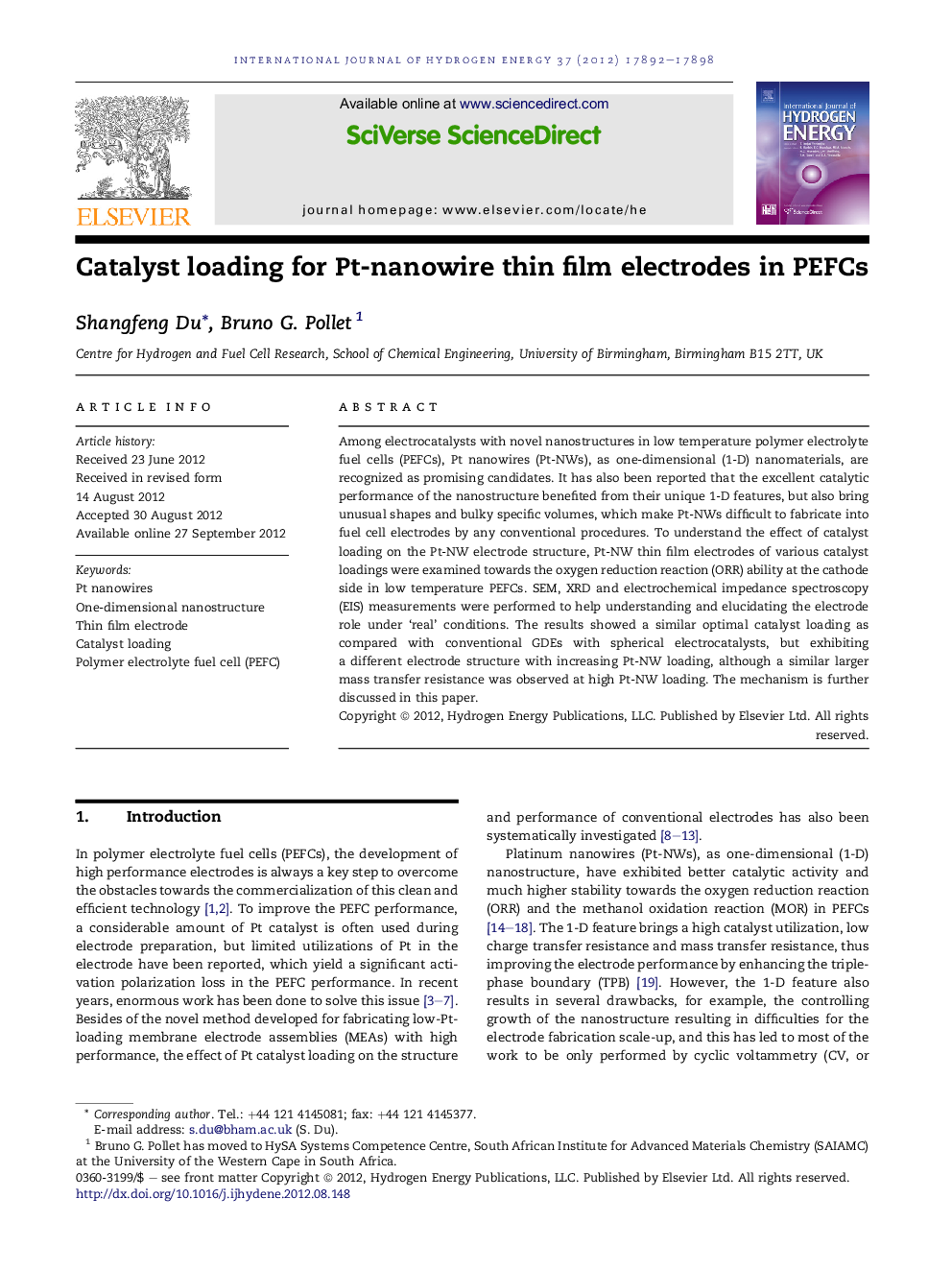| Article ID | Journal | Published Year | Pages | File Type |
|---|---|---|---|---|
| 1278308 | International Journal of Hydrogen Energy | 2012 | 7 Pages |
Among electrocatalysts with novel nanostructures in low temperature polymer electrolyte fuel cells (PEFCs), Pt nanowires (Pt-NWs), as one-dimensional (1-D) nanomaterials, are recognized as promising candidates. It has also been reported that the excellent catalytic performance of the nanostructure benefited from their unique 1-D features, but also bring unusual shapes and bulky specific volumes, which make Pt-NWs difficult to fabricate into fuel cell electrodes by any conventional procedures. To understand the effect of catalyst loading on the Pt-NW electrode structure, Pt-NW thin film electrodes of various catalyst loadings were examined towards the oxygen reduction reaction (ORR) ability at the cathode side in low temperature PEFCs. SEM, XRD and electrochemical impedance spectroscopy (EIS) measurements were performed to help understanding and elucidating the electrode role under ‘real’ conditions. The results showed a similar optimal catalyst loading as compared with conventional GDEs with spherical electrocatalysts, but exhibiting a different electrode structure with increasing Pt-NW loading, although a similar larger mass transfer resistance was observed at high Pt-NW loading. The mechanism is further discussed in this paper.
► Study catalyst loading in Pt-nanowire thin film catalyst electrodes in PEFCs. ► Electrodes have thickness only hundreds nanometers with different Pt-nanowire loadings. ► A high loading leads to dense and large size Pt nanowires in electrodes. ► Similar optimal loading to conventional electrodes with spherical nanocatalysts.
